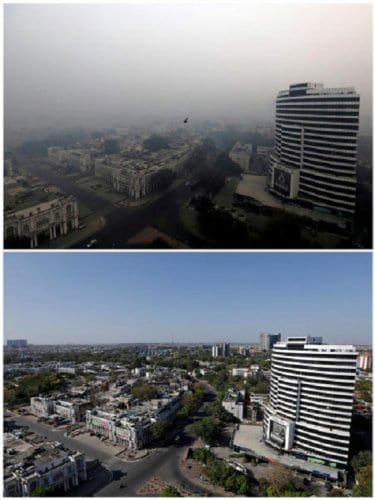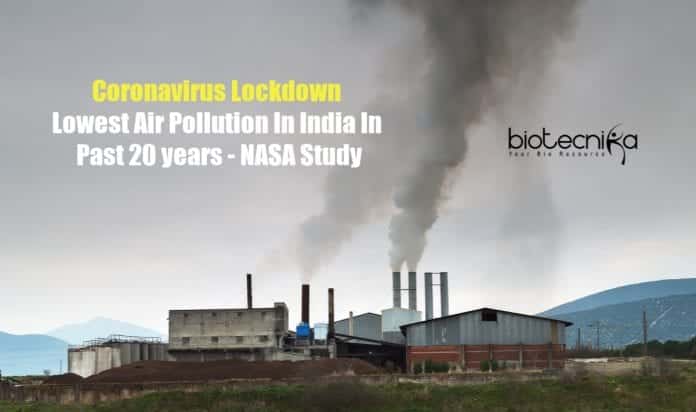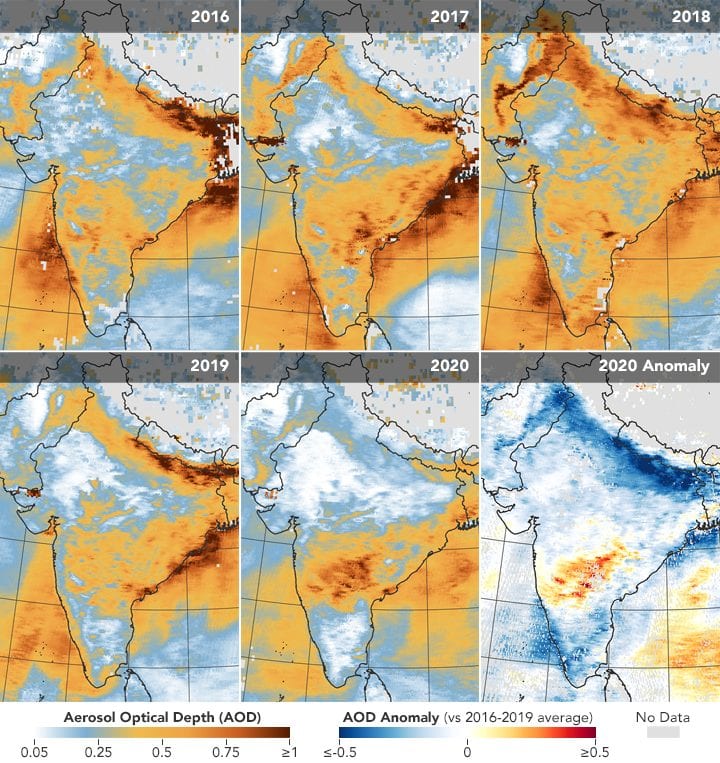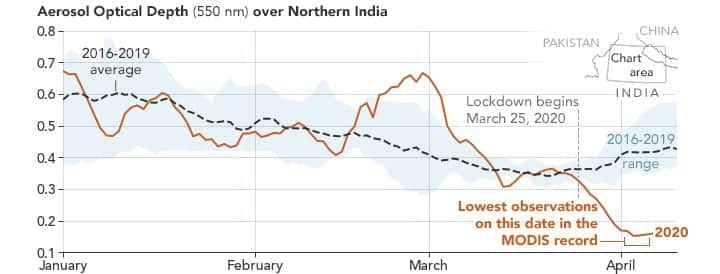NASA study: Air pollution in India lowest in 20 years due to Coronavirus lockdown
The reduction in aerosol levels was observed after just a week of minimized human activity and the data shows low in aerosol levels and air pollution in northern India first time in 20 years.

The study conducted by Pawan Gupta, Universities Space Research Association (USRA), and the NASA team at Marshall Space Flight Center revealed that decreased human activities due to COVID-19 lockdown resulted in plummeting aerosol particles over northern India.
A USRA press statement stated the NASA Satellite data shows a substantial decline in aerosol levels throughout northern India. In several cities, aerosols from anthropogenic (human-made) resources add to unhealthy levels of air pollution every year.
Suspension of fine solid and fluid particles in the air that minimize visibility and also can damage the human heart and lungs are called aerosols. Aerosols can also have natural resources, such as forest fires, dust storms, and
volcanic eruptions. Other aerosols originate from human activities, such as the burning of croplands and fossil fuels. A lot of smaller particles are added due to human-made aerosols which have a higher capacity for harming human health.Gupta said, “During the lockdown, we expected changes in atmospheric composition in many places”. “However during this time of year, I have never ever seen such low levels of aerosol in the Indo-Gangetic plain”.
Measurements of AOD (aerosol optical depth) over India during the same March 31-April 5 period for every year from 2016-2020 is depicted in the first 5 maps. The map number 6 (anomaly) shows the changes of AOD in 2020 compared to the average for 2016-2019. The measure of how light is reflected or absorbed by aerosols as it travels through the atmosphere is called AOD. Extremely hazy conditions are shown when optical depth is 1 or above – when aerosols are concentrated near the surface. The environment is considered to be clean when optical depth or thickness is less than 0.1
The presented data were retrieved on NASA’s Terra satellite by the Moderate Resolution Imaging Spectroradiometer (MODIS).
The majority of aerosols are produced by human activities in the Ganges Valley of northern India during early spring. coal-fired power plants, Motor vehicles, and other industrial sources around urban areas produce sulfates and nitrates. Soot and other carbon-rich particles are produced by coal combustion. Smoke-rich in black carbon and organic carbon are produced in rural areas from cooking and heating stoves and from prescribed burns on farms though farming fires more often occur at other times of the year. In all the ways, the 2020 lockdown has decreased the sources of man-made aerosol emissions.
As seasonal dust storms will begin, scientists anticipate aerosol levels to raise somewhat in upcoming weeks partially India. Dust concentrations are generally reduced in March as well as early April before temperature levels climb and strong western winds blow sand in from the Arabian Peninsula and the Thar Desert. The concern is whether total AOD will certainly stay below normal levels.
Author: Sruthi S
































